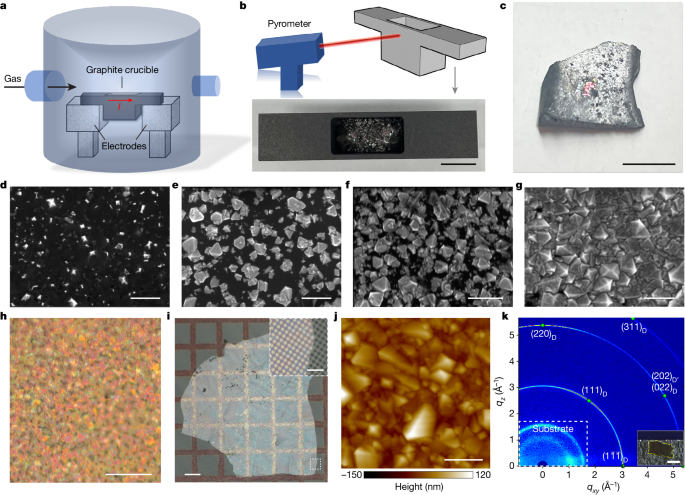- Science Simplified
- Posts
- This week in science
This week in science
Happy Wednesday morning! Thanks for joining in for another week of science. Just 3 new articles for this week, but they’re good ones.
Let me know what you think by taking the polls at the bottom and/or sending me an email with your thoughts.

As you might have heard, natural diamonds form deep in the earth under intense pressure and heat. The process takes pressures up to 6 GPa, or roughly 60,000x the pressure on the earth’s surface and can take a literal billion years.
The first synthetic diamonds were created back in the 1950s. Until recently, they’ve required similar temperatures and pressures as natural diamonds, but much less time. This paper details a new synthesis process that still requires high temperatures, but can be done at room pressure. That’s a huge advancement, as the high pressure ovens required for traditional synthetic diamonds can be quite dangerous and costly.
The scientists use a creative process involving liquid metals supersaturated with carbon to kick off the diamond’s growth. Other elements in the liquid, like silicone, help stabilize the small carbon particles that form and help them become full grown diamonds.
A longer writeup is available here.
Atrial fibrillation causes an abnormal heart rate due to excessive firing in the upper chambers of the heart. It’s typically seen in older patients with risk factors such as obesity. However, in a strange twist, high performance endurance athletes are also at a higher risk.
Why? It’s unclear. But it’s definitely a thing. In one of the studies mentioned in the article, 20% of the distance rowers from the study had the condition vs just 3% in the control group. Interestingly, height is also a risk factor for the condition.
This is a good example of why some risk factors are so hard to figure out. Are the athletes prone to atrial fibrillation because they’re in such good shape, or just because they’re tall on average? Separating out correlation from causation is a difficult task. Many researchers are working on figuring out why, and doing so might help them treat the broader population. The linked full writeup goes into some current studies and confounding factors.
Full article here.
Keto diets are all about cutting out carbs and eating high fat/protein diets instead. I’m not a big fad diet fan, but the keto diet has been studied more than most and shows potential for helping treat a variety of diseases (see the paper for references). However, there have been some negative side effects that are worth studying.
In one of them, cells can enter a state where they just sit around and don’t do much. This state is called “senescence” and is often characterized by cells no longer dividing and losing some of their core functions, while maintaining other potentially harmful ones.
As is expected, this senescence leads to decreased organ function and poor outcomes. Importantly, the paper shows that adding in a standard non-keto diet intermittently between keto rounds prevents senescence and eliminates the harmful effects of keto. This was done in mice, but hopefully we see some human data at some point!
Full article here.
See you next week for more science,
Neil


If you liked this post and want to keep getting cool science delivered to you, sign up for free:

Reply